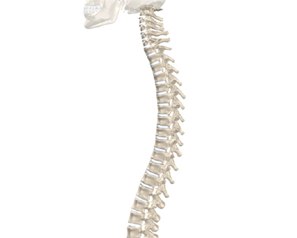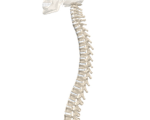comment on why bujinkan? by ariesbudo
From blogurl:henka.wordpress.com inpostauthor:ariesbudo - Google Blog Search by ariesbudo
kent you win the prize!…From blogurl:henka.wordpress.com inpostauthor:ariesbudo - Google Blog Search by ariesbudo
kent you win the prize!… Last week Sensei spoke again of the importance of connection, using the examples of the joints in the body. The body has many joints which both connect all the parts together and allow it to move smoothly. The fewer joints, or connections, we have, the less smooth our movement will be. Demonstrating a technique, he said that he could do it this way because he was using all of the joints in his spine together, as if it were a rope.
Last week Sensei spoke again of the importance of connection, using the examples of the joints in the body. The body has many joints which both connect all the parts together and allow it to move smoothly. The fewer joints, or connections, we have, the less smooth our movement will be. Demonstrating a technique, he said that he could do it this way because he was using all of the joints in his spine together, as if it were a rope.From The Magick & The Mundane » Bujinkan by Shawn Gray
The reason I can do the technique this way is that I’m using my spine as if it were a rope.
– Hatsumi Sensei
 Last week Sensei spoke again of the importance of connection, using the examples of the joints in the body. The body has many joints which both connect all the parts together and allow it to move smoothly. The fewer joints, or connections, we have, the less smooth our movement will be. Demonstrating a technique, he said that he could do it this way because he was using all of the joints in his spine together, as if it were a rope.
Last week Sensei spoke again of the importance of connection, using the examples of the joints in the body. The body has many joints which both connect all the parts together and allow it to move smoothly. The fewer joints, or connections, we have, the less smooth our movement will be. Demonstrating a technique, he said that he could do it this way because he was using all of the joints in his spine together, as if it were a rope.
The rope is an important tool in this years’ training theme as it demonstrates the connectedness of things. Sensei also mentioned that the rope is like one big joint working as a whole – it has no links or joints in it, such as a chain does for example, so it can be used in a supple and fluid manner. Perhaps another way of looking at it is viewing the rope as being composed of a billion tiny joints which have been amalgamated into one thing which works as a single unit. All of the separate parts have been united to create a new thing – and the whole is greater than the sum of the parts, as they say.
The word for joint in Japanese is ‘kansetsu’ (関節), and it is also interesting that the word for ‘indirectness’ is also pronounced ‘kansetsu’ (官設). I certainly felt both aspects of this when he allowed me to feel the technique. He was controlling me so lightly that it felt like I was being held in place by a single sheet of paper. It was the indirect manner in which he responded to my punch that allowed him to do it.
 Back after a long hiatus!
Back after a long hiatus!From blogurl:henka.wordpress.com inpostauthor:ariesbudo - Google Blog Search by ariesbudo
The Kihon of martial arts is not technique and there is a distinct difference between Kihon and Kihon waza. If you do not have solid Kihon then the Kihon waza will result in nothing. The Kihon of Martial Arts is: Distance, Angles and Timing ...…From blogurl:henka.wordpress.com inpostauthor:ariesbudo - Google Blog Search by ariesbudo
The Kihon of martial arts is not technique and there is a distinct difference between Kihon and Kihon waza. If you do not have solid Kihon then the Kihon waza will result in nothing. The Kihon of Martial Arts is: Distance, Angles and Timing ...…From New Products from Budo Shop Store by New Products from Budo Shop Store
 | Title: Keiko26 - Kukan no Nawa (Taijutsu / Nawa / Kenjutsu /Bojutsu)
Instructors: Lauri Jokinen, Mariette v.d. Vliet, Mats Hjelm
Theme: Kukan no Nawa (Taijutsu / Nawa / Kenjutsu /Bojutsu)
Recorded: Recorded in Stockholm May 1-3th 2009
The instruction is in English
Format: NTSC, AAC Stereo, DVD/R- (it might not work on older DVD players! check your manual first!) approximately 120 Minutes playing time.
Lauri, Mariette and Mats are all known and respected Bujinkan teachers in their own country and also internationally. Here they taught individually and together at the end of they day.
Lauri from Finland taught Taijutsu with the feeling of rope, both with and without the actual rope.
Mariette from the Netherlands taught Bojutsu against sword, Taijutsu and Self defence against knife attacks.
Mats from Sweden taught Iainuki (drawing the sword), Kenjutsu, Bofuri (spinning with the long staff) and Taijutsu.
Watch the Trailer at the Budo Shop Community
About the instructosLauri - http:/www.shinden.fi Mariette - http://www.bujinkanbudokai.nl Mats - http://www.kesshi.com Note! The instructions is in English and there is no sub titles on this DVD
Skr239.00
|
From Kabutoshimen by Toryu
The theme of this year is the rope. The rope can be used to describe many things…
The rope is flexible, it has no static form. It change form depending on circumstances. We should strive to be the same in our Taijutsu.
The rope can tie your weapons together, it can hold things together. When you use the rope for tying things together you should make the knot very easy to release, in a way that you quickly can release everything and free the rope. In Taijutsu, use the same principle. You can tie the opponent up, but you should be able to quickly get free. For example the ever so popular jujidori armlock from judo and MMA cage fighting is not it.
The rope can be used as a net, or linked to many things. Like the synapses in your brain, or cables between the internet routers. If you need to use a weapon in Taijutsu you know how to get it and use it without thinking. Because you already made a whole system where everything is the same. You don’t need to think because everything is already linked by the synapses.
Also you can psychologically tie up your opponent in Taijutsu as if you really had a rope in your hands. If you belive it strongly, do it as if you had an invisible rope. The opponent might feel trapped and confused… maybe!…
From blogurl:henka.wordpress.com inpostauthor:ariesbudo - Google Blog Search by ariesbudo
An interesting discussion emerged from training last night with Soke. Soke mentioned that what is important in the experience of his training is for us to grasp the image. The mind must be able to imagine the desired outcome in a sense of ...…From blogurl:henka.wordpress.com inpostauthor:ariesbudo - Google Blog Search by ariesbudo
At times, I naturally find myself asking why Bujinkan? This question is especially noticeable to me when I'm attending training at Ayase or the Hombu Dojo and there are so many people present from so many different countries and ...…